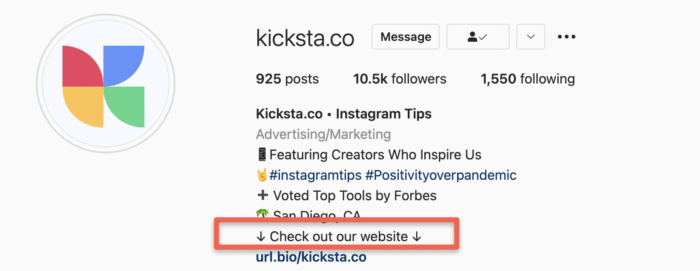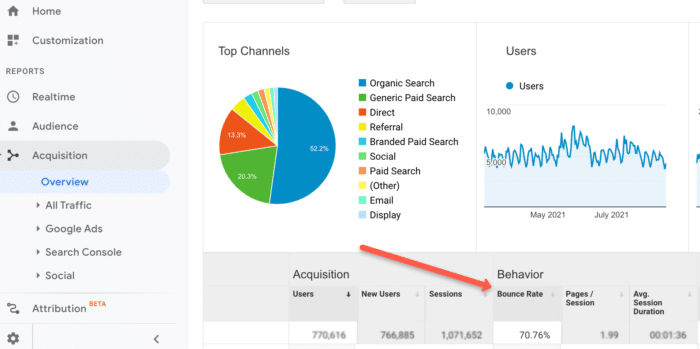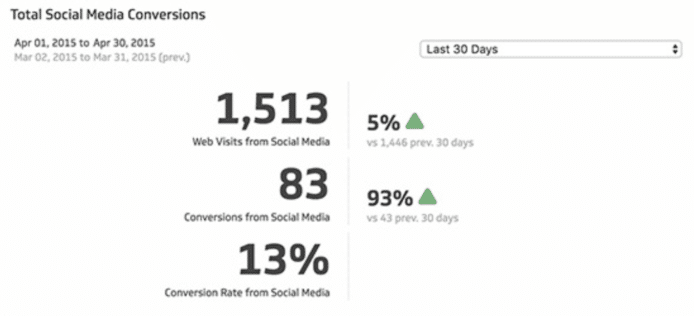10 Crucial Social Media KPIs You Should Be Tracking

The world has moved online, and that means your social media presence has never been more important. More and more, the events of social media infiltrate our news, entertainment, and shopping habits.
For any business wanting to gain a reputation, having interesting and enjoyable social media profiles is a must. But just having an online social presence isn’t sufficient – it needs to be performing well, too.
Whether you’ve followed all the trends or are entirely new to social media retail, it can be tricky to work out how this is helping your business. However, with these ten social media KPIs, you can nail the metrics that make a difference to your marketing strategy.
Quick Links
What Does KPI Mean?
KPI stands for “key performance indicator.” Essentially, these tell you how followers are engaging with your social content. This data can be used to inform future campaigns and gather feedback on what works, what doesn’t, and, crucially, what leads to sales and builds customer relations.
This is important information to communicate to your team, and you can use apps similar to Slack to ensure marketing and sales are collaborating to use these metrics effectively. If you’re not already, try looking at the following social media KPIs for your company’s social media.
The 10 Crucial Social Media KPIs You Should Be Tracking
1. Reach
How many people have seen your new post? While various social media algorithms play a part, you can also use some tricks to make content more visible. For example, posting when your followers are most likely to be scrolling through and using trending Instagram hashtags can boost your post up their feeds.

This is a handy social media KPI as it helps you to measure the impression you have on your audience. If your reach is low, then no wonder your latest campaign didn’t do well. On the other hand, a high reach means more people will be exposed to your content and have a chance of becoming customers.
2. Engagement
Similar to reach, engagement isn’t only about who sees your posts but who interacts with them. This collates the likes, comments, shares, saves, and favorites and finds an average based on the number of followers you have. It’s quite an easy social media KPI to interpret – if lots of people are interacting with your posts, you’re probably doing something right.
This metric is also especially important when you’re trying to find Instagram influencers. If an influencer drives greater engagement on their posts, they’re likely a good fit for your brand as they can help you get the exposure you want.
And even if you don’t want to find influencers yourself, it’s one thing that an influencer marketing agency would look at when choosing influencers for your brand.
Not all engagements are created equal, as liking posts verges on a subconscious action for some. However, sharing and reposting require more thought and an actual desire to share the content.
Diving into more specific metrics of engagement can give an even clearer picture of where you need to up your social media customer service and which posts are doing the most for your business.

3. Likes
We’re all familiar with the double-tap action, a response that shows you enjoyed what you just saw or read. Likes indicate whether your followers are actually interacting and interested in that particular piece of content, or swiping through to something else. And even though platforms like Facebook and Instagram have new features to hide the number of likes a post receives, these are still tell-tale signs of engagement that can be tracked through analytics.
While most business accounts on social media platforms can access analytics for each post, there are also third-party apps like Iconosquare that show average likes per profile, top followers that like your posts, and overall follower growth.
If you’re looking to gain more likes in general, it’s best to avoid paid services that could pose a risk for spam and Instagram flagging your account. Instead, try an organic Instagram growth service like Kicksta, gaining real followers that’ll like your posts for the long haul, upping engagement naturally.

Want to organically grow your Instagram and gain REAL followers?
Try Kicksta Today!4. Comments
Comments aren’t only useful in measuring engagement with a post but gathering reactions to your content and assessing how your followers perceive you. Of course, they aren’t always going to be positive, but even negative comments allow you to adapt and change your marketing.

Hosting creative Instagram giveaways and competitions will often prompt more comments on your posts and encourage followers to tag other accounts in your content. This can be handy in gaining reach, but maintaining this is equally important. Consistent high levels of comments show your posts are constantly starting conversations and promoting engagement.
5. Mentions
Monitoring where your business is mentioned and how often this is happening can help you gauge how your brand comes across to customers. By implementing a lead scoring model, you can not only track the frequency of mentions but also assign values to different types of mentions based on their potential for generating leads. Lots of mentions mean your business is a talking point and it’s more likely people will think of you when needing services. This could help to generate leads for your business and increase customers.
Nonetheless, it’s worth remembering that bad experiences also get mentions, so keep an eye on what the mentions are saying about your business. Considering the number of mentions your brand gets compared to competitors can paint a picture of customer opinions and preferences.
If you’re constantly getting overshadowed by competitors, it’s probably time to shake up your social media campaigns and try a different approach to get people talking.

6. Amplification Rate
Just like mentions, your amplification rate shows people are talking about your business. It measures the regrams, shares, retweets, and pins your posts receive compared to the number of followers you have. A high amplification rate shows that followers regularly share content and think it’s worth their followers’ time.
This social media KPI can give you a fresh perspective into what boosts your Instagram reach or reach on other social platforms, as regular amplification means more people are seeing your content. Looking at the amplification rate of each post can provide insights into what is most shareable and what you should create more of.
7. Conversion Rate
Your conversion rate is how many of the clicks from your social media result in a customer action or purchase, making it a key social media KPI. High conversion rates suggest your content does a good job at getting people to visit your site and do something when they get there.
There are many different variations on conversion rates, but an easy way to calculate this is by dividing your conversions by the total number of clicks you get.
Using calls to action throughout your posts can encourage followers to click through and make a purchase. These are instructional commands to “talk to us today” or “subscribe for more info.” They encourage a specific action, from arranging a conversation on a video meeting app to subscribing to your email newsletter.


Want to organically grow your Instagram and gain REAL followers?
Try Kicksta Today!8. Bounce Rate
Hand in hand with conversion rate is bounce rate. Even if loads of followers are clicking through to your website, newsletter sign-up, or event page, this doesn’t always result in the action you want. Bounce is when those who click through leaving the page without completing the action.

This can indicate unclear links in your bio, confusing landing pages, or a less-than-ideal customer experience. However well your content and social media campaigns are doing at drawing people in, their success is being mitigated by some other feature. This gives your business clear metrics that can be acted on to improve marketing and sales.
9. Reviews
If you want the easiest way to see what customers think of your business and how it’s performing, reviews can spell it out. These also show what other customers are seeing before they decide to purchase. Having plenty of good reviews can increase customer confidence in you.
Bad reviews can be equally important. Not only do they give readers an assurance of accuracy and honesty in the reviews, but they also allow you to respond and show clear actionable points that need to be rectified.
Perhaps you need to increase your customer support on social media or simplify the customer experience. Acting on critiques and responding appropriately to comments can show the authenticity of a business and its sense of responsibility.
10. Cost Per Conversion
How much is each customer action costing you? If the amount you’re putting into social media promotions and engagement is outweighing the number of conversions you’re getting, you have a problem.
Reflect on the whole cost of a campaign – are you using the most suitable design and scheduling apps? The idea is that the more developed your social media marketing becomes, the lower the cost of conversions will be.
By targeting the audiences most likely to follow call-to-actions or make a purchase, and using social media insights, you can minimize your business’s cost per conversion. Likewise, the more followers you have amplifying your content, engaging with it, and regularly commenting, the more conversions you can get at a lower cost.
How Are Your Social Media KPIs Looking?
Checking social media KPIs is not a one-time thing but something you need to constantly be aware of. Whether you’re launching a new campaign, looking to optimize your social media presence, or wanting to know how customers view your business and KPI thru process mapping tools are essential. Regularly schedule opportunities for your marketing team to review these and incorporate this into your company process map.

Don’t just let these metrics stay as numbers either – act to improve them as a team, using free group video conferencing to evaluate and strategize your social media presence. You could improve your marketing strategy and business profits at once.
If something isn’t working, don’t be afraid to try something new. It could be exactly what you need to give new life to your social media.
Author Bio

Elea Andrea Almazora
Elea is the SEO Content Optimization manager for RingCentral, the top video chat app and collaboration solutions on the cloud. She has more than a decade’s worth of experience in on-page optimization, editorial production, and digital publishing. She spends her free time learning new things.
Instagram Growth Hacks
Join over 100k+ marketers and influencers who get the latest Instagram tips & tricks sent to their inbox every week



2 Comments
Thank you for opening this topic. There is literally everything needs. The use of KPI proved their effectiveness in business processes and it doesn’t matter whether it is large or small business administration.
Hello there! We’re glad you found this thoughtful! KPIs are super crucial to any business and we agree!